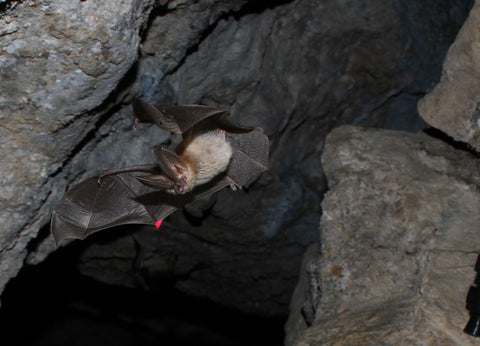A Little Batty: Why Teaching Kids About Bats is So Important

Flying Fox, a type of megabat that eats, pollinates and disperses fruit plants, Signe Allerslev
October Is Bat Appreciation Month — But Let’s Make It a Year-Round Lesson
Every October, we celebrate Bat Appreciation Month — a perfect opportunity to spark curiosity and compassion for one of the most misunderstood mammals on Earth. But rather than confining bat awareness to a single month, why not weave it into your child’s lifelong love of nature?
As a biologist whose first fieldwork involved bats in Central Texas, I can say these amazing creatures are among the most ecologically important — and tragically misrepresented.
Their story offers rich opportunities for holistic, nature-based learning that blends biology, ecology, art, and storytelling.
Bat Fun Facts for Kids
Bats are the only mammals that evolved true flight — not just gliding!
Bat Basics: What Makes These Flying Mammals So Special?
Bats have been fluttering through Earth’s skies for more than 50 million years. Fossils from the Eocene Epoch show us that bats evolved alongside modern mammals in the Cenozoic Era. As of 2021, scientists have discovered over 1,400 bat species worldwide.
They fall into two main groups:
- Microchiroptera – mostly insect-eating bats
- Megachiroptera – fruit and nectar-eating bats
Only two megabat species are native to the continental U.S., but when U.S. territories like Guam are included, that number increases slightly. Most American bats belong to the insect-eating Microchiroptera group.
Bats are also long-lived (up to 30 years) and typically raise one pup per year, making their populations vulnerable to habitat loss.

Microchiroptera Bat

Megachiroptera Bat
Bat Fun Facts for Kids
Some bats eat frogs, fish, or even scorpions! One of our favorites, the Hoary Bat, is a furry U.S. native that roosts in trees.
Mexican free-tailed bats emerge from Bracken Cave near San Antonio, Texas to set out on their nightly feeding of pest insects. Credit: Michael Durham_Minden Pictures /Bat Conservation International
Why Bats Are Essential for Ecosystems and Farming
Bats play a vital role in:
- Pollinating tropical plants like bananas, mangoes, guava, and agave
- Dispersing seeds in rainforests and dry eucalyptus forests
- Saving U.S. farmers $23 billion annually by eating pest insects
- Helping produce over 90 medicinal plants
Bats are ecological multitaskers. They contribute to biodiversity, agriculture, and even the timber industry by controlling insect populations and supporting plant life through pollination.
Bat Behavior: Gentle, Social, and Surprisingly Loving
Bats live in female-led colonies, often numbering in the millions. Males may roost in small bachelor groups or stay solitary until breeding season.
These colonies thrive on social cooperation. Some mothers even help care for each other’s pups, increasing the chances of survival. There’s evidence of food sharing, gentle grooming, and extensive vocal communication.
Some species have been recorded using up to 50 different vocalizations, many of which are positive social interactions.

Bats benefit from maintaining a close-knit roosting group because it's important for rearing pups. Photo by Alan Cressler, USGS
Bats and Their Babies
Here's a look at a large nursery colony crowded with babies and moms trying to get to them to nurse.
Bat Bonding in Action
Blossom was injured by a cat and rehabilitated before release. Watch how affectionate she is with her caretaker — she loves gentle grooming and close contact.
This heartwarming video by Adam Cox shows how strong the bonds between bats and humans can become, especially during recovery and care.
Megabats and Microbats Bond with Wildlife Rehabilitator
This is another video of both types of bats, Megabats and Microbats, with a wildlife rehabilitator. . The Dodo.
Two Types of Bats That Call North America Home
Insect-Eating Bats

Tricolor Bat (microchiroptera); Insect Eating Bat, Russell Cave National Monument, Alabama, U.S.A., National Park Service, 2012
About 45 insectivorous bat species live in the U.S. and Canada. They’re natural pest control agents, eating mosquitoes, moths, beetles, and crop-destroying insects.
These little aerial acrobats help reduce pesticide use by eating tons of pest insects each year, supporting healthier farms and gardens for everyone. Check out this video clip below of bats in action catching their prey.
Nectar-Feeding Bats

Lesser Long Nosed Bat Covered in Agave Cactus Flower Pollen, National Park Service, 2010.
Two migratory species — the Lesser Long-Nosed Bat and the Mexican Long-Tongued Bat — journey from Mexico to the American Southwest each year.
They pollinate:
- Agaves and cacti, including the keystone Saguaro cactus
- Succulents and cardons across the Sonoran Desert
Without these bats, entire desert ecosystems would collapse. Their long tongues help them reach deep nectar while pollinating along the way.

Saguero Cactus Flower Blooms that Rely on Megachiroptera Bats, National Park Service
Bat Myths, Ethics, and Educational Resources
Here’s a link to “The Truth About Bats” by Lightfoot Films – A family-friendly documentary for homeschoolers and curious kids. Want to bust common myths and teach kids the truth about bats? This short film is an excellent place to start.

Western Big Eared Bat, Nevada Cave, National Park Service Photo by B.T. Hamilton, 2020
Different Bat Species
This page by Bat Conservation International lists some of my favorite US bats, including one that eats scorpions. That's definitely impressive.

Hoary Bat, Isle Royale National Park, 2014, National Park Service Photo
Bat Ethics
The Case for Vampire Bats by NPR's Skunk Bear
Bat Fun Facts for Kids
Out of approximately 1411 species of bats, only 3 bat species are vampire bats, and they are only found in Latin America.
Final Thoughts
Whether you’re a parent, teacher, or homeschooler, bats offer a rich, engaging way to teach science and stewardship. By helping kids understand these remarkable mammals, we empower them to care for the world we share.
Let’s go batty — in the best way possible.
Coming Soon: All About Bats – Part II
Look out for our next post with bat-themed books, crafts, and educational activities to bring your bat learning to life.
Find a list of all the bat resources from this blog post compiled onto one page here.
Disclaimer
Although I am a certified educator with an active teaching credential, the content I share on this Site is intended for general informational and educational purposes only. It does not constitute personalized professional advice, consultation, or an educational plan.
Written by Laura Lowe
Laura is a professional educator with decades of experience working with children and the environment. She’s also an avid crafter, lover of storytelling and books, novice hobby farmer, mom to three daughters and six grandchildren.







